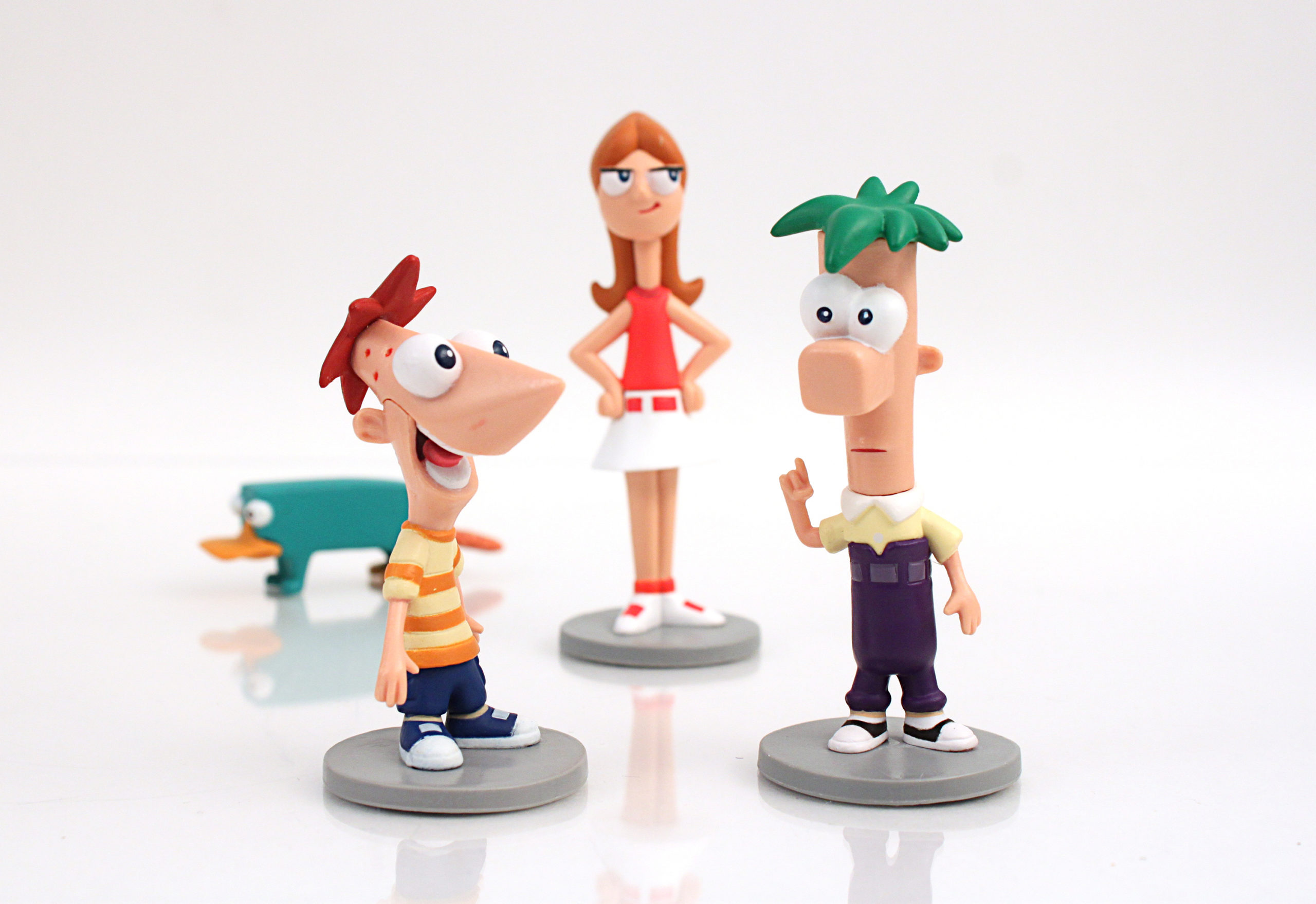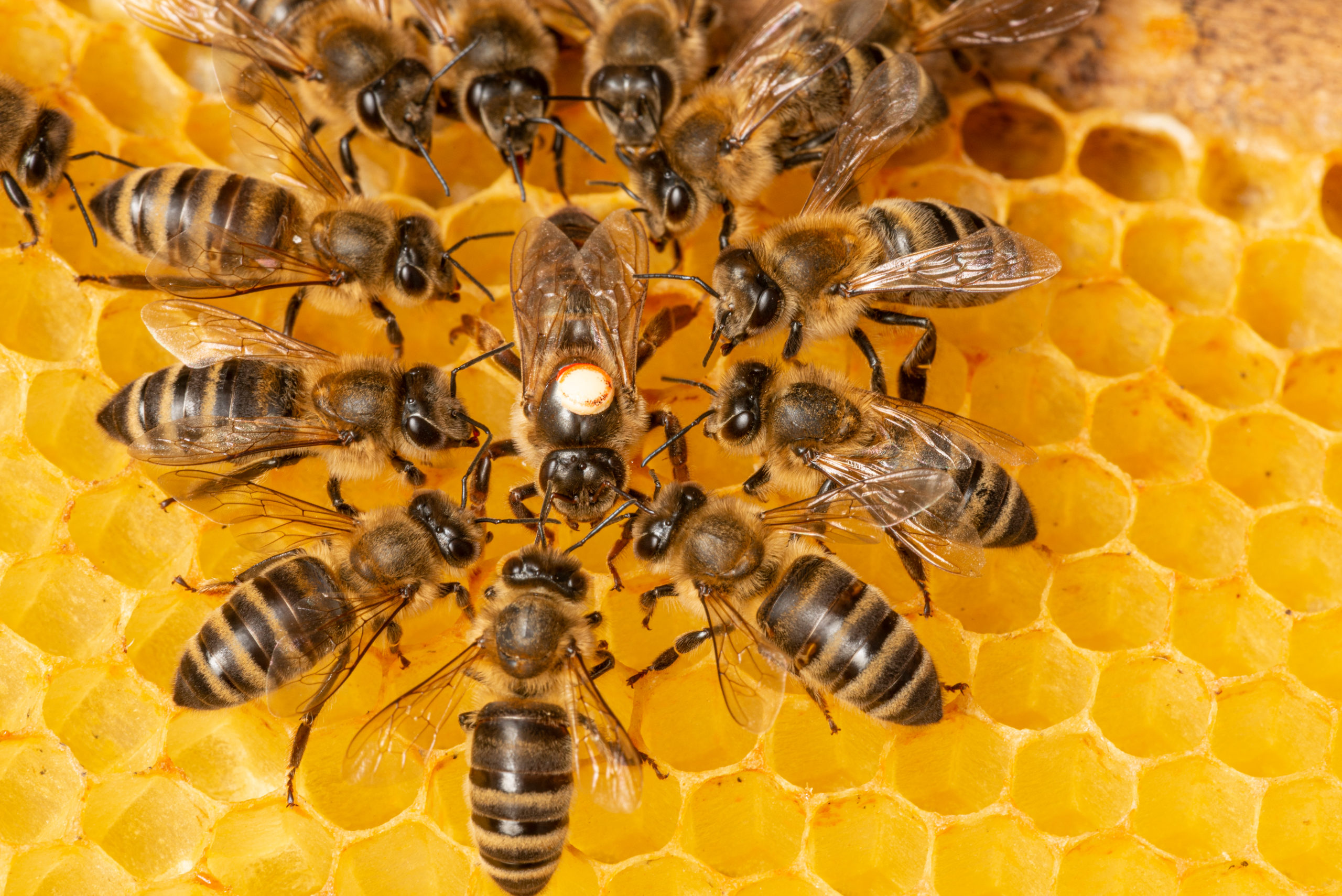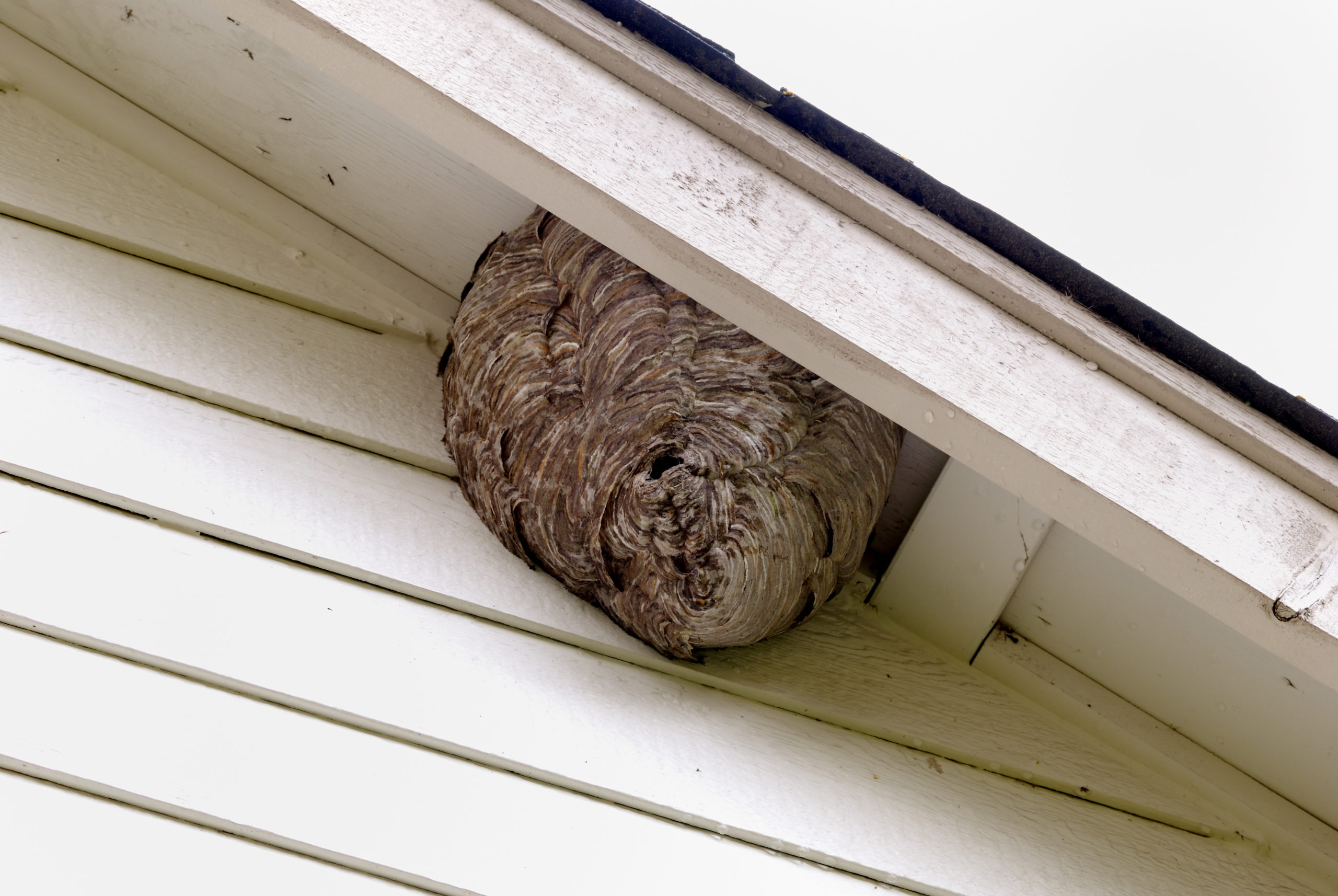How Accurate Are the Bees in Phineas and Ferb’s “Bee Day/Bee Story?”
How Accurate Are the Bees in Phineas and Ferb’s “Bee Day/Bee Story?”
Some of the best TV shows are the ones that teach both children and adults about the real world without feeling like a lecture from the world’s most boring teacher. There are plenty of animated and live-action children’s shows that achieve this, but many of them are not the most entertaining for many adults. Phineas and Ferb is relatively educational while using its fun characters and running gags to capture the attention of children, and often includes jokes that older viewers will appreciate even more. The wild inventions of the two stepbrothers always put the most fun spin on an ordinary activity or subject, and the episode “Bee Day/Bee Story” is no exception. This is a rare instance where both halves of the episode connect, as the second part shows us how Isabella and her troupe of Fireside Girls (like Girl Scouts) earned their Beekeeping Patches during the first episode’s Bee Day festivities. The B-plots of both are even dedicated to bee-themed evil schemes from Dr. Doofenshmirtz and Professor Poofenplotz, which we will also dive into. Let’s bee-gin!
A Quick Synopsis of the Episodes

We won’t break down every part of each half, but you can always watch them if you’re in the mood for some fun television! We do want to briefly discuss the bee-related plot points so the following analysis makes more sense if you’ve never seen the episode.
“Bee Day” is about the titular holiday that Danville created to celebrate bees and all of the hard work they do in pollinating flowers and making honey. It seems like a fun celebration with its bee balloons, decorations, souvenirs, and catchy song that every citizen knows for some reason. But the bee part of this episode we’re focusing on is in the “Bee”-plot (too much?). Perry the Platypus tries to stop Dr. Doofenshmirtz from using his Aroma-inator, which he of course explains in great detail. It’s basically just a giant perfume bottle filled with liquid bee pheromones that he will spray on himself to be more attractive to the bees and become the king bee. His reasoning is that we never hear about a king bee, so there must be a vacancy that he could fill and work his way up to ruling the Tri-State Area, per his overarching goal. He traps a ton of bees in a vacuum and sprays himself with the pheromones to prepare to release the bees. But his plan is predictably foiled when the reverse switch on the vacuum launches the bees into Doofenshmirtz’s face, Perry sprays all of the pheromones into the air, and the bees leave to follow the scent of their favorite perfume.
“Bee Story” actually takes place at the same time as “Bee Day,” but this half is focuses on Isabella and her Fireside Girls troupe as they try to earn their beekeeping patch. The audience gets closure on the small detail of Isabella borrowing Phineas’ sorbet machine that turns people into insects (check out the earlier episode “Fly on the Wall” for backstory on that contraption) since she uses it to turn her group into bees to locate their missing colony. This results in the girls following the scent of the sweet pheromones to Doofenshmirtz’s Aroma-inator and getting trapped in the vacuum with the other bees. The queen bee says she is too weak to fly without her royal jelly, so the girls make a sling for the worker bees to carry their queen after the swarm is freed and they fly away. After the troupe is returned to human-form, they use the bee waggle dance that they learned from Baljeet earlier to instruct the bees to enter the hive. The B-plot follows Agent Pinky the Dog as she stops Professor Poofenplotz from her plan to consume a bunch of royal jelly and become the ultimate queen bee, even though Poofenplotz does get covered in the jelly at the end. But since nothing happens after that, it’s safe to say that the normal queen bees are still in charge.
Un-Bee-Lievable Bees: Analyzing the Accuracies

Now that we have some information on the stories, let’s dive into the facts. In short, this is actually very accurate to real bees and bee colonies, and the songs include a lot of useful bee facts that are now easier to remember with the catchy melodies. If you want to teach your children about bee colonies and how bees communicate, this is a great episode to use. But why is it so accurate? Let’s go bee-yond the plot summaries and compare the cute cartoon bees to the real buzzing bees.
Pheromone Perfume
Since so much focus is placed on this chemical concoction, it’s worth looking into what pheromones actually do for real bees. They aren’t used in as fun of a way, since they can’t be collected and sprayed like Doofenshmirtz did (how did he collect them anyway?). Pheromones are invisible chemicals released by a species to communicate with and change the behavior or habits of their same species. Bees use pheromones for all kinds of purposes, since each one is varied enough to signal a different message to the rest of the hive. Doofenshmirtz never specifies what kind of pheromones he collected, so we don’t know what message they could be conveying that prompts the bees to attack both him and Phineas and Ferb’s giant wading pool later on after it gets sprayed. Real pheromones can be about important colony functions, like hive organization, alarms, or sterilization for worker bees.
There are two categories of pheromones used in bee colonies. One is primer pheromones, which have a long-term effect on the colony. They are mainly used by the queen since the pheromones change the behavior and development of the worker bees. The other category is releaser pheromones, which elicit rapid changes that don’t last forever. These are simple behavioral changes, like an alarm. When bees sting a mammal, they release alarm pheromones that alert the rest of the colony to the situation, which is why a swarm can happen if the problem is not neutralized immediately. Even the foragers who go out into the field to gather pollen and nectar have their own pheromones. This special chemical is a result of being near the queen and colony pheromones for so long. It helps the hard workers find their way home once they’ve gathered enough materials for the time bee-ing.
Do the Waggle Dance
We’ve discussed the famous waggle dance of bees before, and it’s become a pretty well-known fact of the species. But that’s because it is such an efficient form of communication for them, as explained in the catchy tune that Isabella’s Fireside Girls troupe sings while they perform the dance to instruct their bees. Unfortunately, humans cannot communicate with bees this way. Since the bees are so much smaller and have their nuanced dance system memorized, any of our dance attempts will just look strange and possibly result in stings if the bees think we’re a threat. But besides that plot point, the logistics of the waggle dance are very accurate. Bees use these movements to tell their colony where food or shelter is in relation to the sun. They wiggle their bodies to show the angle from the sun to the entrance of the hive, which the rest of the bees understand.
While this dance can be used by any bee, it is commonly used among forager bees that look for new food sources every day. They return from their triumphant journey and tell their friends the location of the best food source, which the others then cast their vote on using similar body movements. Another use is if the colony needs to move to a new hive for safety reasons. If a bee found a good spot, it will return and communicate the coordinates to the rest of the group. This is not only an effective way to get the whole colony on the same page quickly, it is also a fun way to communicate some otherwise ordinary news!
She’s a Killer Queen (Bee)
The whole reasoning behind Doofenshmirtz’s plan is that we always hear about the queen bee, so there must be a job opening for the king bee in a colony. But as many of us know, the queen is a one-woman act who does not rule with any other bee. She is fertilized by multiple male drone bees before spring in order to constantly lay many eggs during the warmer weather. Queen honey bees can lay up to 2,000 eggs at a time in the middle of spring! So Doofenshmirtz would not have been very disappointed if his plan actually worked, since he wouldn’t be in charge of anything.
Queen bees even mirror human royalty, since they always have “assistants” nearby to serve them. Certain worker bees will stay with the queen at all times to provide food and tend to the new eggs, as well as provide a last line of defense. The rest of the colony knows the queen is okay because they smell her pheromones throughout the hive. She secretes her own scent out of her mandibles, which are stronger when she is healthier. Every colony has a unique pheromone scent because each queen has a different one. The central role of the queen bee is exactly why it is important for the colony to move fast when she dies. The workers have to immediately replace a deceased queen bee because, if they go too long without one to instruct them, they will eventually die out. Strangely enough, we don’t get any mention of this in the episode…
Royal Jelly Time
Conversely, this is Professor Poofenplotz’s evil plan involving bees – or rather, what they make and eat. Her logic behind wanting to eat a lot of royal jelly is that queen bees do it, and they become larger and live longer than other bees. This is exactly right, and it’s fun to see a villain who does her research first! Royal jelly is not the kind of jelly we put on our toast. It is an excretion from worker bees that all bee larvae eats for a few days, but the queen eats for the rest of her life. She even lives in a hive cell filled with the stuff until she comes out of the larvae stage. Because the royal jelly is filled with protein and has so many vitamins for the bees, the queen grows to be about 1.5 times bigger than the worker bees, and live a few years longer than they do. Even though she has the same genetic makeup as the workers, the queen is more nourished because of the jelly. We don’t think this means that a human would grow more by eating royal jelly, so the faulty logic was just in Poofenplotz’s mind.
Professor Poofenplotz wants to eat enough royal jelly to become bigger and live longer like a queen bee, but her plan does not come to fruition, thanks to Pinky’s quick thinking of crashing the helicopter into the vats of royal jelly at the cosmetics factory. This is also a realistic detail to include. Not the dog flying a helicopter, but the involvement of royal jelly with cosmetics. It has been a staple in skincare and supplements for centuries, and was actually eaten by royalty in our culture. Monarchs in major countries like China, Egypt, and England would eat it for nutrients and with the hope of living longer. Royal jelly contains vitamin B, vitamin C, collagen, and antioxidants, so it does have some nutritional value. There aren’t too many recent studies on whether this is super effective or not, but considering that more medical professionals aren’t prescribing spoonfuls of royal jelly, it may just be another supplement that doesn’t do as much as the others.
Pest Control is the Bee-st Way to Get a Pest-Free Home

Bees are one of the most beneficial insects alive, as their pollination of plants and flowers results in the fauna living a healthier life. So while we don’t want to remove bees from the ecosystem altogether, it’s not good when they set up shop in our backyards. The docile bees can turn angry very quickly if their hive is disturbed, and they won’t stop if they release pheromones to say the threat is still present. Their stings aren’t fun for anyone, but they can be dangerous for those who are allergic! Our knowledgable technicians will remove any hives and provide EPA-approved treatments that will solve the bee problem without harming the greenery. Contact us for more information on our efficient services and to learn how we can keep your yard from being the next big bee celebration.
***Disclaimer: Section 107 of the United States Copyright Act recognizes “fair use” copywriter content as such: “Notwithstanding the provisions of sections 106 and 106A, the fair use of a copyrighted work, including such use by reproduction in copies or phono-records or by any other means specified by that section, for proposes such as criticism, comment, news reporting, teaching, scholarship, or research, is not an infringement of copyright.” This blog post may contain certain copyrighted works and characters that were not specifically authorized to be used by the copyrighted holder(s), however, the content on this post qualifies as “commentary” on the copyrighted works under the “fair use” doctrine of the U.S. Copyright Act and is thereby protected by federal law. Furthermore, we do not claim any ownership or creative rights of any characters on this list, and all rights outside of the fair use doctrine belong to the respective owner(s).
Citations
Bruneau, S. (2017, March 17). Royal jelly – A worker bee produced, protein rich, mother’s milk. Bee Culture. Available at https://www.beeculture.com/royal-jelly-worker-bee-produced-protein-rich-mothers-milk/ (Accessed on July 15, 2022).
Grozinger, C. (2019, August 20). How do honey bee use pheromones to communicate?. Bee Health. Available at https://bee-health.extension.org/how-do-honey-bees-use-pheromones-to-communicate/ (Accessed on July 15, 2022).
Guilbaud, A., K., Orrantia, J., Petterson, B., & Vetere, D. (Writers) and Elliot, G., Oliver, K., & Perrotto, S. (Directors). (2013, March 26). Bee Day/Bee Story (Season 4, Episode 6) [TV series episode]. In Povenmire, D. & Marsh, J. (S.) (Executive Producers), Phineas and Ferb. Disney Television Animation.
How bees use pheromones. (n.d.). Perfect Bee. Retrieved July 15, 2022, from https://www.perfectbee.com/learn-about-bees/the-science-of-bees/how-bees-use-pheromones
Katy. (2019, August 30). Queen bee pheromones. Save the Bees. Available at https://beemission.com/blogs/news/queen-bee-pheromones (Accessed on July 15, 2022).
8 Creative Ways to Have a Pest-Free Fourth of July
8 Creative Ways to Have a Pest-Free Fourth of July 8 Creative Ways to Have a Pest-Free Fourth of July Summary: The Fourth [...]
A Simple Guide to Preventing Stinging Pests
A Simple Guide to Preventing Stinging Pests A Simple Guide to Preventing Stinging Pests Summary: Stinging insects are more active in warm weather, [...]
These 10 Natural Mosquito Repellents Can Actually Help
These 10 Natural Mosquito Repellents Can Actually Help These 10 Natural Mosquito Repellents Can Actually Help Summary: Natural mosquito repellents are easier to [...]
How to Get Rid of Carpet Beetles
How to Get Rid of Carpet Beetles How to Get Rid of Carpet Beetles Summary: Carpet beetles are sneaky pests that don’t usually [...]
How Do Roaches Affect Asthma and Allergies?
How Do Roaches Affect Asthma and Allergies? How Do Roaches Affect Asthma and Allergies? Summary: It’s no secret that pests impact human health, [...]
These 5 Carnivorous Pests Might Surprise You!
These 5 Carnivorous Pests Might Surprise You! These 5 Carnivorous Pests Might Surprise You! Summary: There are many eco-friendly ways to prevent pests, [...]

